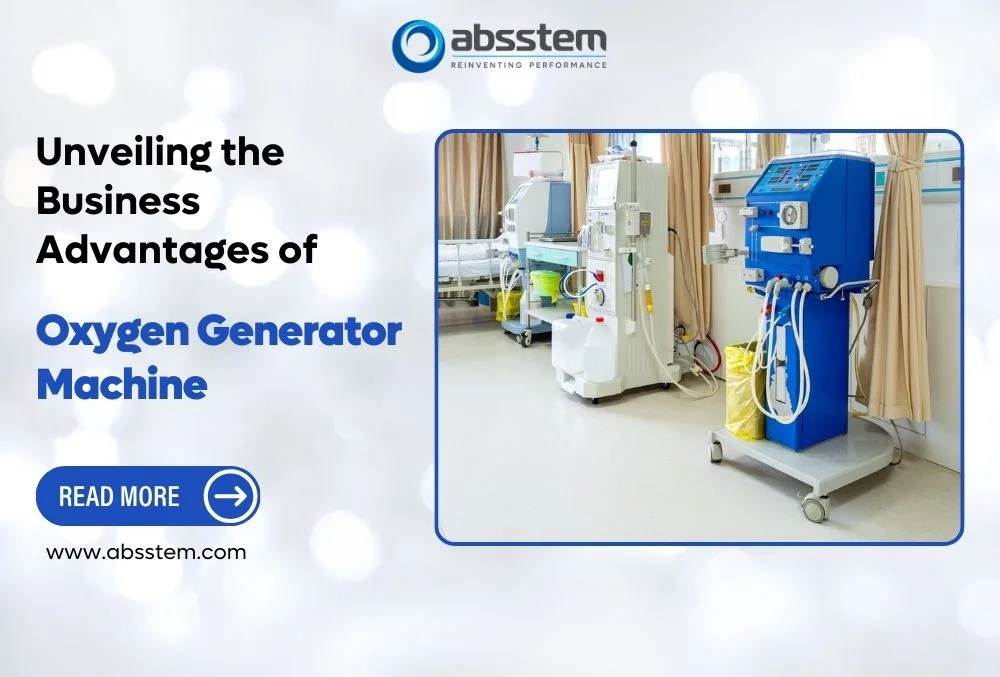In recent times, the importance of oxygen has taken center stage, especially as businesses across various industries recognize the manifold benefits of integrating oxygen generator machines into their operations. From healthcare facilities to industrial settings, the advantages are vast and transformative.
In this post, we will discuss the ways businesses can harness the power of oxygen generator machines to optimize efficiency, enhance safety, and elevate overall productivity.
Advantages of Oxygen Generator Machines
- Sustained Operational Efficiency:
In the industrial and manufacturing sectors, oxygen is often a critical component of various processes. Oxygen generator machines ensure a continuous and reliable supply of oxygen without the need for frequent cylinder replacements. This not only minimizes downtime but also streamlines production processes, resulting in sustained operational efficiency.
- Healthcare Optimizations:
In healthcare settings, oxygen demand is paramount, especially in hospitals, clinics, and emergency services. Oxygen generator machines provide a cost-effective and on-demand solution for medical oxygen needs. The ability to generate oxygen onsite ensures a steady supply for patients, reducing dependence on external sources and mitigating logistical challenges. PSA medical Oxygen Generators are designed specifically with pharmacopoeia-compliant FIO2 in mind.
- Cost Savings and Sustainability:
Oxygen generator machines offer a significant cost advantage over traditional methods of obtaining oxygen. Businesses can eliminate recurring expenses associated with oxygen cylinder deliveries and rentals. Additionally, by producing oxygen onsite, companies contribute to sustainability efforts by minimizing transportation-related carbon footprints and reducing the overall environmental impact.
- Enhanced Safety Measures:
In industrial environments where oxygen is utilized for welding, cutting, and other processes, the safety of employees is a top priority. PSA Oxygen generator machines provide a safer alternative to handling and storing high-pressure oxygen cylinders. With the on-site generation of oxygen, the risks associated with transportation, storage, and handling are greatly reduced, contributing to a safer workplace.
- On-Demand Oxygen Generation:
The flexibility of on-demand oxygen production is a key advantage for businesses with fluctuating oxygen requirements. PSA Oxygen generator machines can adjust production levels based on real-time demand, ensuring that businesses have the precise amount of oxygen needed without excess or shortages.
Also read: A Comprehensive Guide: How Oxygen PSA Generators Work
Is the oxygen plant profitable?
The profitability of an oxygen plant can depend on various factors, including the scale of the operation, market demand, operational efficiency, and the cost of production. Here are key considerations that can influence the profitability of an oxygen plant:
- Market Demand: Oxygen demand is a critical factor. Industries such as healthcare, manufacturing, and metal cutting rely heavily on oxygen, and if there is a consistent demand in your target market, it can contribute to the profitability of the plant.
- The scale of Operation:
The size and capacity of the oxygen plant play a significant role. Larger-scale plants may benefit from economies of scale, potentially reducing production costs per unit of oxygen. However, smaller plants can also be profitable, especially if they cater to niche markets with specific needs.
- Operational Efficiency: Efficient production processes and the use of modern technology can enhance operational efficiency. Energy-efficient equipment and streamlined processes can contribute to lower production costs and improved profitability.
- Cost of Production: Managing and minimizing production costs is crucial for profitability. Factors such as energy costs, raw material expenses, and maintenance costs can impact the overall cost of producing oxygen. Efficient sourcing and utilization of resources can positively influence profitability.
- Market Competition: The level of competition in the region or industry can affect pricing and market share. If there is limited competition and strong demand, it may create favorable conditions for profitability.
- Regulatory Environment: Regulatory compliance is essential in the production and distribution of medical-grade oxygen. Adhering to safety and quality standards is not only a legal requirement but also crucial for building trust with customers. Compliance with environmental regulations is also important.
- Diversification of Products and Services: Offering additional services or products related to oxygen production, such as related gases or specialized applications, can contribute to revenue diversification and increased profitability.
- Global Events and Trends: External factors, such as global events or trends, can impact the demand for oxygen. For example, events like the COVID-19 pandemic increased the demand for medical oxygen, creating opportunities for profit in the healthcare sector.
In summary –
The adoption of PSA oxygen generator machines represents a strategic leap towards operational excellence, cost efficiency, and enhanced safety across diverse business sectors. This forward-looking approach not only ensures immediate benefits but also underscores a commitment to sustainability and resilience amidst evolving global challenges.
For businesses investing in these cutting-edge technologies, the journey extends to a future where oxygen becomes a self-reliant asset, delivering precise and reliable solutions tailored to unique needs. To navigate this transformative landscape successfully, entrepreneurs and businesses are urged to conduct thorough market analyses, assess local demand, and diligently evaluate the financial feasibility of oxygen plant investments. Staying abreast of industry trends, technological advancements, and regulatory shifts is imperative for sustained success, with insights from industry experts serving as a compass in navigating the nuanced dynamics of oxygen production in specific regions.
